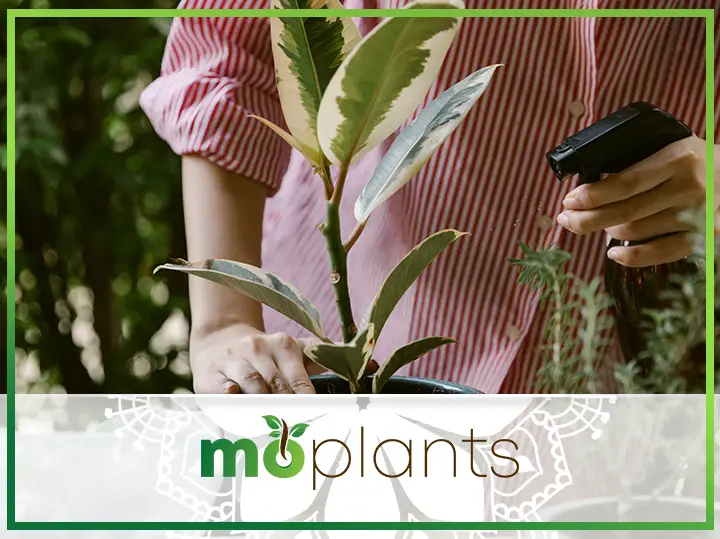Neem oil is a highly effective substance for garden plants because it is a natural substitute for insecticides. It wards off pests and bugs while killing them slowly, making it an excellent choice for plant enthusiasts. However, it does pose some risks, which are essential to keep in mind, especially as you use it more frequently.
When using neem oil to target pest infestations, follow the guidelines from gardening experts who have experimented with what works. For this reason, you should pay close attention to the rules stated in this article since it is possible to use too much neem oil on plants.
Let’s explore details of how much neem oil is too much and how to use it effectively.
Signs You May Be Using Too Much Neem Oil
Coat all parts of a plant’s foliage with neem oil to prevent a pest infestation. Still, you should pay attention to some signs of ill-use. These signs indicate that you should moderate your use or consider an alternate strategy. Let’s explore two key signs you may be using too much neem oil.
Sunburnt Leaves
Drench your garden plants completely with neem oil to increase the duration it stays on the leaves. If you soak your plants early in the morning, the sun will cause the oil to heat up, leading to sunburnt leaves. However, this is not a clear-cut sign of using too much neem oil since you’re supposed to spray your plant in the late afternoon or early evening.
Yellowing Leaves
The second indicator of using too much neem oil on your plants is the presence of yellow leaves. Your plants’ leaves will quickly turn yellow if the neem oil blocks the pores, negatively impacting the plants. Eventually, the leaves will begin to droop because they cannot produce the necessary nutrients to survive.
Will Your Plant Die if You Use Too Much Neem Oil?
As we’ve just mentioned, using excessive amounts of neem oil on your plants can block the leaves pores and cause respiration issues. These are harmful and can inhibit the plants’ ability to produce flowers and fruit. If you spray your plants with too much neem oil on warm days, the sun can cause the oil particles to heat up, leading to burns.
If you use neem oil as a soil drench, it can also burn the roots. Spraying your plants with an abundance of neem oil can create toxicity problems that impact the plants and beneficial insects. However, neem oil is relatively safe for humans, which is why it can be used on edible plants, provided you use it safely.
Ways to Safely Use the Right Amounts of Neem Oil on Your Plants
Using neem oil safely on your plants requires following the necessary protocols. Doing your research is necessary because it helps you avoid making unnecessary mistakes that can cause your plants to die. Let’s explore ways you can safely use neem oil on your plants.
Dilute Your Neem Oil Solution
Many people don’t dilute their neem oil solution properly, covering the plants’ foliage with too much oil. You can easily avoid this issue by adding only one tablespoon of neem oil to a gallon of water.
Depending on your plants’ needs, such as the progression of infestations, you can slightly increase the ratio for more optimal effects. However, you should stick to the general guidelines for creating the ideal ratio of neem oil solution since that will prevent any harmful side effects.
Spray Your Plants During Late Afternoon or Early Evening
If you spray your plants with too much neem oil while the sun is coming out, they can start to burn and exhibit the signs of ill health described in this article. For this reason, it is best to use neem oil during the late afternoon or early evening.
The sun’s warming effects are less potent when it is going down, meaning your plants can survive a more rigorous coating. Neem oil typically dries off of your plants within a few hours; it will not heat up when the sun goes down.
What Is the Perfect Concentration of Neem Oil for Your Plants?
As we’ve described, your plants can suffer the harmful effects of too much neem oil use. For this reason, you should create the perfect neem oil solution to spray your garden plants. You can find all kinds of neem oil varieties on the internet, but it is best to opt for cold-pressed neem oil concentrate. When buying the right type of neem oil, it is crucial to read the label and verify whether it’s 100% natural.
Once you’ve ordered your main ingredient, you can mix a tablespoon of it with one gallon of water and a teaspoon of organic liquid soap. The soap works as an emulsifier and helps the oil mix with water, creating the perfect solution.
Add these ingredients directly into a handheld garden sprayer and mix them thoroughly. When your solution is ready, spray your plants once every four to seven days for two to four weeks, depending on the severity of your pest infection.
As a general rule of thumb, you should use your solution immediately after mixing it to prevent it from losing its potency. Also, you can use any leftover solution as a soil drench for a compounded effect.
Final Verdict
Using too much neem oil on your garden plants is certainly possible. This can be avoided by creating the right concentration of the solution and spraying your plants at the right time. If your solution is too concentrated, it can lead to burns and cause your plant to die.
It is worth remembering that usage frequency must also be monitored. So, you should only apply the solution once every four to seven days for no longer than four weeks for the desired effects. By following the protocols stated in this article, you will avoid experiencing any detrimental effects of neem oil.


